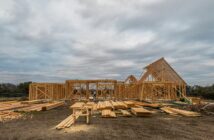The new national framework for managing earthquake-prone buildings (EPBs) that became effective on 1 July 2017 has brought several changes, Duncan Cotterill partner Paul Calder advises.
These include a national register, new forms of EPB notice that must be displayed prominently on all EBPs and set time frames for assessment and strengthening.
The Building (Earthquake Prone Buildings) Amendment Act 2016 (Amendment Act) was passed in 2016, and the final regulations (Regulations) underlying the legislation have now been released.
The third component of the new regime, the engineering methodology (EPB methodology), must now be finalised by the end of July 2017.
Together the Amendment Act, Regulations and EPB methodology set the approach all councils will take when dealing with EPBs going forward.
Councils, engineers and commercial building owners are each assigned key responsibilities in connection with the implementation of the new system.
These can be summarised as follows:
The initial identification of EPBs by councils do not involve a detailed engineering assessment of the buildings.
Councils are required to look at building features at a high level in making their initial assessments (as set out in the EPB methodology).
It is up to building owners to undertake detailed engineering assessments as required.
What commercial building owners need to know
The Amendment Act brings with it significant changes to the way EPBs will be identified and managed.
Final information on some aspects of the new framework cannot be confirmed until the EPB methodology is released.
However, the following is an overview of the principal aspects.
What happens now the new rules have come into effect?
Councils must identify potential EPBs within their regions.
They must do this using criteria and building profile categories established in the EPB methodology (which must be published in final form by the end of July 2017).
This identification process must take place within the timeframes established for low risk (15 years), medium risk (10 years) and high risk (5 years) seismic areas.
Priority buildings (such as schools and emergency facility buildings) in high and medium risk areas must be identified in half the time.
Councils can also take steps to identify EPBs not fitting within the categories set out in the EPB methodology at any time
Owners of buildings identified as potentially earthquake prone must be notified of this fact by the council and must also be informed of the basis on which that assessment has been made.
What must I do if I receive a notice that my building may be earthquake prone?
The council will request that you provide them with an engineering assessment of your building.
If you receive such a request, you must either:
- Within 12 months, provide an engineering assessment that meets the requirements of the EPB methodology (this may be a previous assessment that meets the criteria set out in the methodology). An extension of time may be granted in certain circumstances; or
- Provide evidence to the council of a factual error with respect to the building’s identification as being potentially earthquake prone; or
- Notify the council that an engineering assessment will not be obtained, in which case you will effectively be accepting the classification of the building as earthquake prone by default.
In the event of a dispute with the council over the earthquake status of a building these issues can be addressed through the determinations process in the Building Act 2004 which in itself can also be appealed to the courts.
How will a final decision be made about whether my building is an earthquake-prone building?
The council will use the information provided in the engineering assessments and its property files, and will seek any additional engineering support that it may need, in order to make a decision whether the building is in fact to be classified as earthquake prone.
Generally speaking, as is currently the case, an existing building will be required to achieve at least 34 per cent of the new building standard (NBS) in order not to be regarded as earthquake prone.
What happens if my building is determined to be an earthquake-prone building?
If the council decides that your building is an EPB, or if you don’t provide an engineering assessment and the building is determined by default to be earthquake prone:
- The council must assign an earthquake rating for the building. The earthquake rating system aims to provide a measure of a building’s expected performance during an earthquake. Two possible ratings are currently proposed one being for buildings 20-33 per cent of NBS and the other for buildings less than 20 per cent NBS or where the percentage of NBS is unknown;
- An earthquake prone building notice will be issued to you as the building owner and you must display this notice prominently on the building until the building is upgraded or otherwise determined not to be earthquake prone. This notice will be A4 in size, contain the information prescribed by the Regulations and have a border (with a uniform width of between 12.5mm and 15mm) that uses the colour and design prescribed. Notices for EPBs in the earthquake rating category of 0 per cent to less than 20 per cent NBS must have a border of orange and black diagonal lines. Notices for EPBs in the earthquake rating category of 20 per cent to less than 34 per cent must have a border of black and white diagonal lines, and notices for EPBs for which no earthquake rating can be assigned must have a solid orange border; and
- Information about the building will be published on a national earthquake-prone buildings register to be developed and managed by MBIE.
Earthquake ratings, earthquake prone building notices and the earthquake prone buildings register are key features of the EPB framework.
They are designed to disclose risk to the public so that individuals can make their own risk assessment.
Commercial building owners may find that the display of an earthquake-prone building notice has a negative impact on the ability to tenant the building and on the value of the building.
In order to have their building tenanted it may be necessary to strengthen earlier and to a higher standard than the legally imposed requirements.
What strengthening work must I do?
If your building is an EPB, you must take action to either demolish your building or strengthen it within the defined time frames.
The time frames are for low risk areas – 35 years; medium risk areas – 25 years; and high risk areas – 15 years.
This time frame runs from the date upon which the council issues you with an earthquake-prone building notice.
You may apply for an extension of time if your building is a heritage building, or for an exemption from having to undertake strengthening work if you have a building with low risk characteristics set out in the regulations.
If an exemption is granted your building must still display a notice on the building identifying it as earthquake prone.
It is open to building owners to undertake strengthening work earlier than the required time frame.
You may also be required to undertake seismic upgrades earlier in circumstances where you are planning to undertake “substantial alterations” to the building (as defined by the Regulations) or where there is a change in use of the building.
What happens if I don’t do anything within the required time frame?
Councils are provided with powers to take action regarding seismic strengthening where a building owner does not.
In particular, councils may apply to the courts for orders allowing them to carry out the required work if it is not completed on time or is not proceeding with reasonable speed in light of the relevant deadline.
This might include demolishing the building, rather than upgrading it.
In addition, non-completion of required seismic work within the deadlines set is an offence with a maximum fine of $200,000.
The new EPB framework will give commercial building owners lots to factor into their decisions going forward.
In relation to any building stock that is earthquake prone, owners will need to consider the timeframes for and costs involved in strengthening those buildings against projected periods where the buildings may not be tenantable, rental returns and ongoing insurance costs.
Once the final EBP methodology is released, owners should also check the status of any engineering reports they have already commissioned to determine if they would continue to stand up under the new regulatory requirements.
As always, landlords and tenants of commercial buildings should act to ensure that their lease arrangements deal with any strengthening requirements and that they understand their obligations, both under the Building Act and in terms of health and safety.
Parties should seek early advice on the potential impact of these changes to the regulatory environment.
Paul Calder is a partner at Duncan Cotterill, a law firm with a full service offering and locations in Auckland, Wellington, Nelson and Christchurch




